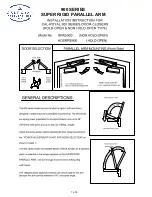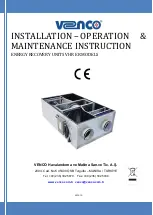
7
((
((
((
(
(
(
(
( (
( ( (
( ( ( (
( (
(
(
(
(
((
((
(
Hot
Water to
House
Supply
Air
Duct
Cold
Water
to Unit
Water
Heater
Water to Loop
Pump
Hot
Water
from Unit
Water
from
Loop
Earth Loop-
Horizontal, Vertical,
Pond (or Well Water)
Air
Coil
Blower
Return
Air
Duct
Cold
Warm
Hot
Cold
Warm
Heating Operation
ABOUT YOUR WATERFURNACE SYSTEM
Heating Mode
During heating, a geothermal system absorbs the heat from the ground via the earth loop. The heating cycle starts
as cold, liquid refrigerant passes through the water-to-refrigerant heat exchanger (coax, and also the evaporator
during heating). The coax is made of copper (or copper and nickel) and consists of a tube within a tube—water from
the loop travels through one tube (the inside tube), refrigerant passes through the other (outer) tube.
As the loop fl uid fl ows through the coax, the heat energy transfers from the loop fl uid to the refrigerant through the
copper wall separating the two. This heat transfer causes the cold liquid refrigerant to turn into a gas. (Unlike water,
refrigerant changes from a liquid into a gas at a very low temperature.) The now gaseous refrigerant is sucked into
the compressor where it is compressed. After compression, the refrigerant will be very hot (approximately 165
°
F)
and discharged through the reversing valve and into the air coil.
The air coil is a radiator-like device that has thin aluminum “fi ns” attached to the copper refrigerant tubing. The
refrigerant passes through the air coil (the condenser during heating). As air from the return air duct system passes
over the air coil, heat is released from the refrigerant and absorbed by the cooler air. The result is warm air (typically
95
°
to 105
°
F) which is delivered through the duct system by the blower.
The refrigerant, now cooled again, passes through the expansion valve (which acts as a fl ow control), returning to
the coax where it can accept more heat from the warmer loop fl uid.
This process is continuous during the heating mode.










































